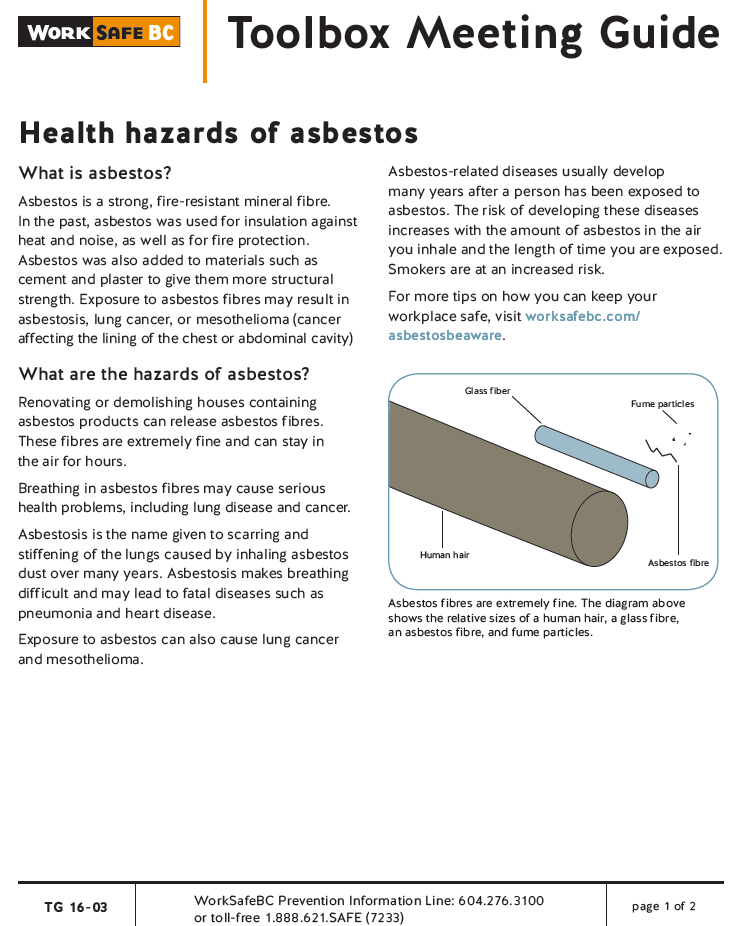Some Known Factual Statements About Asbestos Removal
Table of ContentsAsbestos Removal for DummiesAsbestos Removal for BeginnersTop Guidelines Of Asbestos RemovalThe Ultimate Guide To Asbestos Removal
A decontamination center need to be built so that anybody getting in or leaving the enclosed work area need to pass through each space of the decontamination facility. The decontamination center should consist of at least three inter-connecting spaces: a clean space, a bathroom, and a devices space. 2 common decontamination facilities are shown below.This is to reduce the spread of asbestos fibers from the work location. Portable Decontamination Trailer Common Decontamination Center Source: Building Security Association of Ontario This room is to be used for changing into uncontaminated protective clothes, placing on respiratory equipment, saving clean clothing and, after showering, for dressing in street clothes.


Asbestos Removal Can Be Fun For Anyone
It is advised that there suffice showers to prevent delays. Having to wait on access to a shower could trigger some people to hurry through the decontamination procedure or to skip it altogether. The shower space should also be geared up with clean towels. Contaminated work clothes, shoes, tough hats, goggles and other devices ought to be saved in an area nearby to the bathroom.
The spaces must be arranged so that anyone travelling through the work area need to pass through each space and needs to: decontaminate his or her protective clothing utilizing the vacuum or damp cleaning; remove his or her protective clothes; place the protective clothing in the recommended container; shower; and, get rid of and clean the respirator. Asbestos Removal.
The waste load-out location consists of a room constructed into the enclosure, but separated by airlocks from the work location and the area outside the enclosure as revealed below. Curtained entrances made from overlapping sheets of polyethylene or other impervious materials are utilized to form the air locks. Waste containers are cleaned up by damp wiping or usage of a HEPA vacuum in the workspace and after that placed in the waste load-out area.
The disposal of asbestos waste is governed by Regulation 347, General-- Waste Management, made under the Environmental Defense Act. Where Type 3 operations involving friable ACM are continued outdoors, enclosures are not required and the work area need to be separated from the surrounding area by barricades, fencing or other methods (see below).
Some Of Asbestos Removal
This might include the use of drop sheets made of polyethylene or other material that is invulnerable to asbestos on work surfaces. Care needs to be required to make sure that the material utilized does not develop a slipping risk that might put employees at danger of falling. Removal of Asbestos Outdoors Source: Construction Security Association of Ontario A decontamination facility need to be located as close as practicable to the work location.
The decontamination facility should be built so that any one entering or leaving the workspace need to travel through each room. Custom-made trailers equipped with 3 space decontamination centers are offered for usage as decontamination centers. These systems can be moved from one work website this article to the next and are frequently used for outside work.
For deal with non-friable ACM that is done with power tools that are not attached to dust-collecting gadgets geared up with HEPA filters, an enclosure of polyethylene or other appropriate material need browse around this site to be constructed, unless walls currently confine the work location. The entryways and exits to the enclosure should be fitted with curtains made from polyethylene or other suitable material that is impervious to asbestos, on each side (see below) and, if the enclosure is nontransparent, it should be fitted with several transparent windows to enable observation of the entire workspace from outside the enclosure.

The building of an enclosure is discussed in the previous section handling preparation for indoor Type 3 operations involving ACM that are explained in paragraphs 1, 2, 3, 4 and 6 of subsection 12( 4 ). Work With Power Tool Not Equipped With Dust Collection Device and HEPA Filter Source: Building And Construction Security Association of Ontario There are three aspects to the control of asbestos dust: control at the source; separation between the worker and the source; and hygiene procedures and procedures.
What Does Asbestos Removal Mean?
Keeping ACM damp tends to minimize the number of asbestos fibres that get into the air and also increases the settling rate of the fibres that are released. The Regulation needs that a wetting representative be contributed to water that is utilized to manage the spread of dust and fibers.
Enclosures made of polyethylene or other product that is impervious to asbestos must be utilized on some Type 2 check and Type 3 operations to stop the spread of dust from the work location if the workspace is not enclosed by walls. In a lot of indoor Type 3 operations, the generation of air-borne asbestos fibres should also be managed by installing a ventilation system geared up with HEPA filters and by developing and maintaining a negative air pressure of 0. Asbestos Removal.
The upkeep of negative atmospheric pressure within the enclosure relative to the location outside the enclosure assists to prevent the spread of fibres and is a requirement for indoor Type 3 operations. Because the unfavorable air unit exhausts air from the enclosure through a HEPA filter, it likewise helps to lower airborne asbestos concentrations within the enclosure.